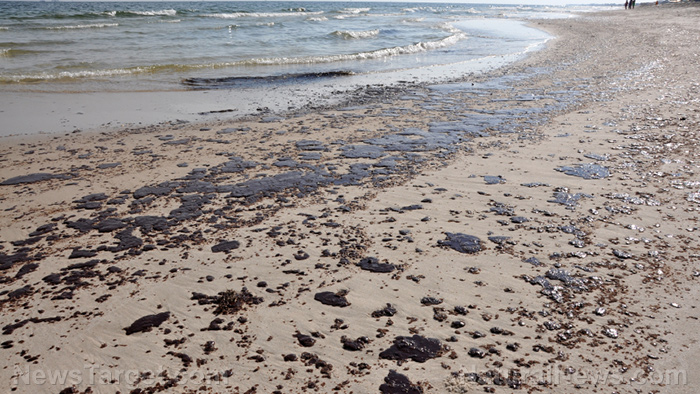
More than a decade and hundreds of millions of dollars later, researchers are still trying to find out where all this oil ended up through a concept called environmental fate.
Some of the most commonly discussed fates of oil spilled at sea are biodegradation, where microorganisms consume and break down the oil; and evaporation, where liquid oil turns into a gas and oil stranding on shorelines.
However, scientists from the Woods Hole Oceanographic Institution (WHOI) have found that at least 10 percent of the oil floating on the Gulf following the Deepwater Horizon disaster was dissolved in seawater by sunlight through a unique process called photo-dissolution.
The results of the study were published in the journal Science Advances.
Deepwater Horizon disaster
On April 20, 2010, the oil drilling rig Deepwater Horizon operating in the Macondo Prospect in the Gulf of Mexico exploded and sank.
Following the explosion, four million barrels of oil flowed from the damaged Macondo for more than 87 days.
Collin Ward, co-author and assistant scientist in WHOI's Marine Chemistry and Geochemistry Department, explained that the amount of oil transformed by sunlight into compounds that dissolved in seawater during the 2010 Deepwater Horizon spill was similar to that of commonly accepted oil fates, such as biodegradation and stranding on shorelines.
The experts think the finding is fascinating, especially since it could impact their understanding of where else the oil is going, and "whether the result is good or bad," said Danielle Haas Freeman, lead author from the Massachusetts Institute of Technology and a WHOI Joint Program student.
She added that if this sizable fraction of oil is being transformed by sunlight and is dissolving into seawater, it's possible that less oil is ending up in other places, like sensitive coastal ecosystems.
But Freeman also thinks that researchers have to consider the impacts of the compounds on marine organisms before they can confirm if the "net result is positive or negative." (Related: New study reveals true extent of toxic oil spill from Deepwater Horizon disaster.)
Oil fate and different types of light
To verify the finding, the research team used custom-built light-emitting diode (LED) reactors to measure how the rate of this oil fate varies for various types of light, like visible or ultraviolet light.
While experts have known about the process of oil photo-dissolution for over 50 years, the recent study sheds more light on how this process varies with light wavelength, which Ward and the rest of the research team determined using the LED reactors.
Ward added that this vital piece of information allowed them to estimate the importance of the process during a spill. The novel measurements gathered using the LEDs also helped the scientists find out which conditions were most important in controlling this process.
The team created hypothetical spill scenarios and applied several changing conditions, such as:
- Locations around the world
- Times of the year
- Types of light
- Varying oil slick thicknesses
Results showed that some of these changing conditions mattered more compared to others.
According to Freeman, the importance of the process changed dramatically when comparing thin and thick oil slicks. The researchers also discovered that, unlike what is commonly believed, the process is relevant in Arctic waters.
This is a particularly important finding because of the expected increase in cargo ship traffic and the heightened risk of spills in that area.
Freeman added that this kind of modeling could be very helpful when forecasting spills and considering the impacts on marine ecosystems.
The belief that ocean surface oil could have a new fate is crucial for framing the future of oil spill studies and spill response tactics.
Scientists have yet to determine the fate and potential toxicity of these sunlight-produced compounds, which creates an obstacle in assessing the impacts of the oil fate.
Despite the uncertainty, Freeman and Ward encourage the field to take a closer look at these gaps in knowledge.
The findings suggest that a significant fraction of surface oil can dissolve into the ocean after sunlight exposure. Ward suggested that the logical next step would be to evaluate "its persistence and potential harm to aquatic animals."
Watch the video below to know more about the Deepwater Horizon oil spill.
This video is from the TruthBeTold channel on Brighteon.com.
More related stories:
Oil-eating microbes are destroying sunken Nazi sub thanks to the Deepwater Horizon spill.
Sunlight triggers chemical reactions that make the Deepwater Horizon oil spill unlikely to degrade.
Sources include:
Please contact us for more information.























